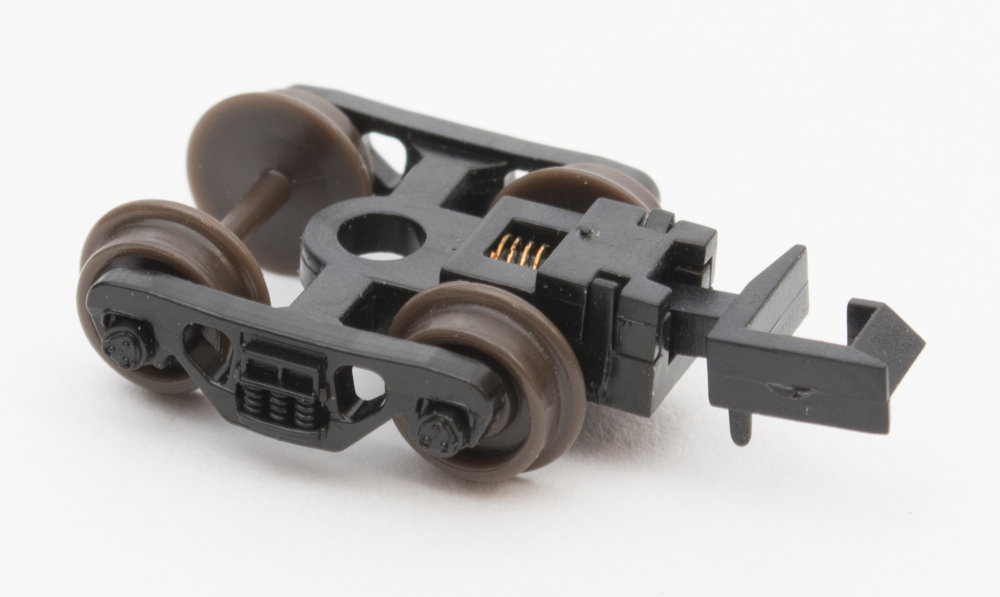
In the 60-plus years that N scale has been around, there has been a great deal of change in couplers. Rapido, an early manufacturer of N scale models (not to be confused with today’s Rapido Trains), let other companies use its coupler design. The wedge-front coupler, which was used on most N scale models (except Micro-Trains) through the 1990s, pivoted up and down. This allowed one coupler to ride over the other for coupling. Although the Rapido did a good job of keeping cars coupled, it – like the horn-hook in HO – was oversized and didn’t look like a prototype knuckle coupler.
While coupling with Rapido’s N scale couplers was easy, uncoupling cars was often difficult. Most modelers would lift one car off the rails. This proved tricky because the car would then have to be put back on the rails. Often times uncoupling in this manner would cause adjacent cars to derail.
Uncoupling ramps for Rapido couplers afforded some degree of automatic uncoupling. However, the ramps were fussy to deal with and required precise car placement to work properly. It also relied on the couplers making contact with the uncoupling ramp, potentially causing a derailment.
The Magne-Matic era
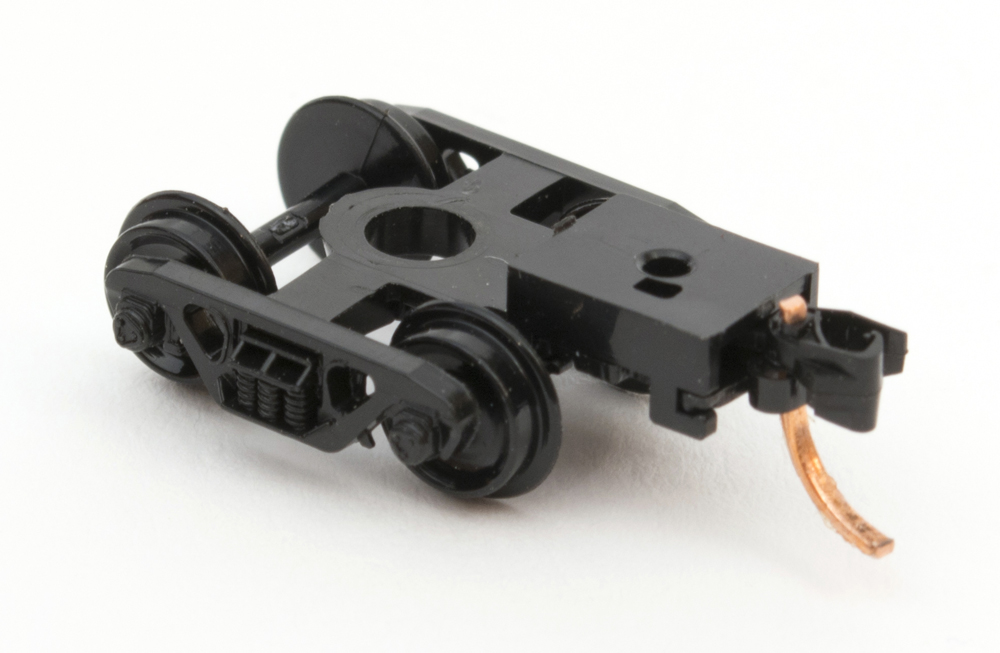
Following on the success of its HO scale knuckle coupler, Kadee introduced an N scale version of its Magne-Matic operating knuckle coupler in the late 1960s. The spring-loaded coupler is split in half vertically. The knuckle is on the top half of the shank, while the rest of the coupler head is on the bottom half. The coupler opens and closes in a scissors action.
In 1990, Kadee split into two companies, Kadee (HO and larger scales) and Micro-Trains (N and Z scales). For many years, the only way you could get factory-installed Magne-Matic couplers was by purchasing a Micro-Trains freight car. In recent years, other companies have been offering models with Micro-Trains couplers, including BLMA Models (now part of Atlas Model Railroad Co.), Eastern Seaboard Models Corp., Fox Valley Models (now part of ScaleTrains), and Trainworx.
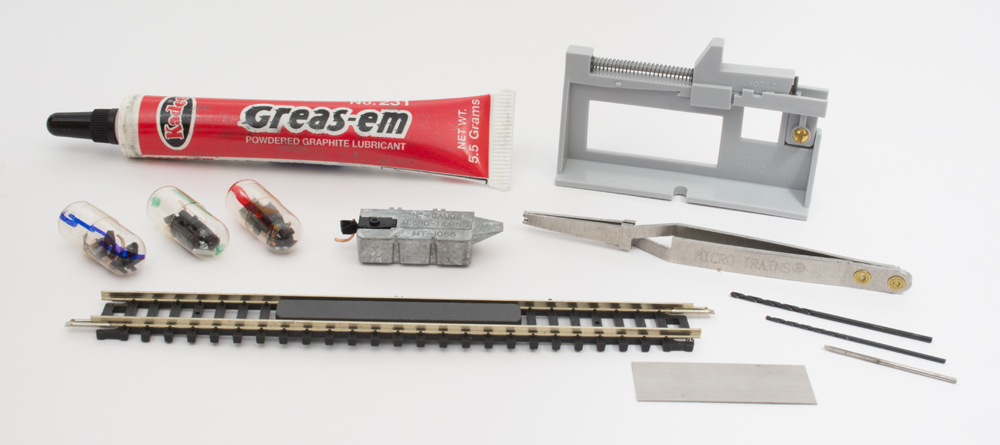
Today, Micro-Trains produces coupler conversion kits for many current and former N scale locomotives and freight cars. The company also offers a variety of truck-mounted couplers, as well as assembled couplers and coupler kits designed for body mounting. You can familiarize yourself with Magne-Matic couplers by purchasing the N scale coupler starter set, item No. 1059.
New coupler manufacturers
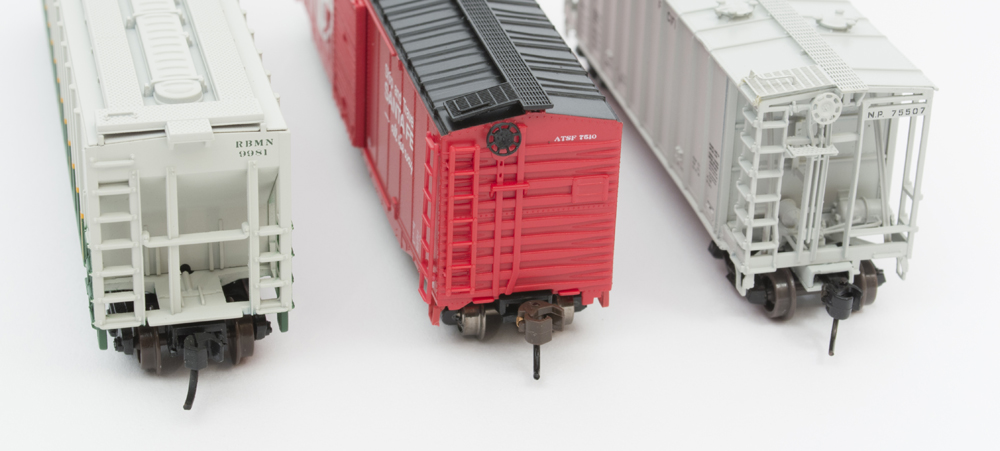
Similar to what happened in the HO scale market, the late 1990s saw a growth in automatic N scale couplers from other manufacturers. Accurail (Accumate, found on Atlas models), Bachmann (E-Z Mate), and McHenry (Athearn) all offer plastic knuckle couplers. The couplers all follow the designs of their HO scale counterparts.
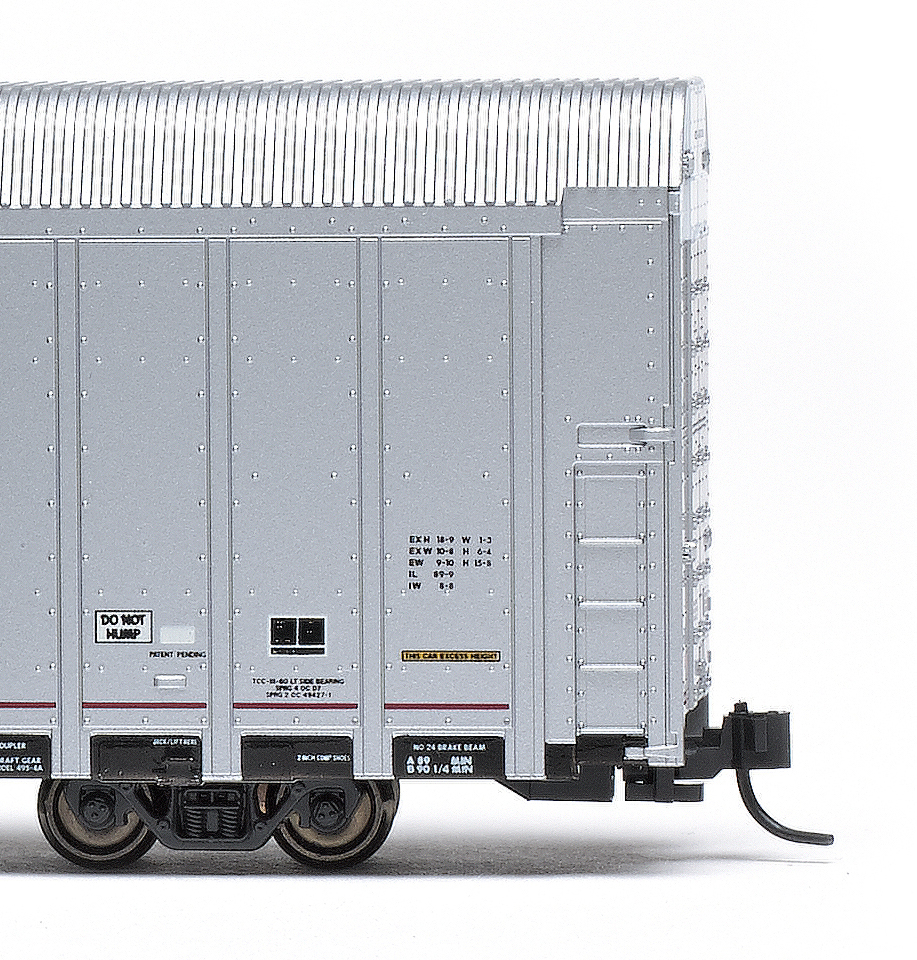
Kato uses a proprietary line of couplers on its locomotives and rolling stock. Unlike other brands, the trip pin on Kato couplers must be installed by the modeler.
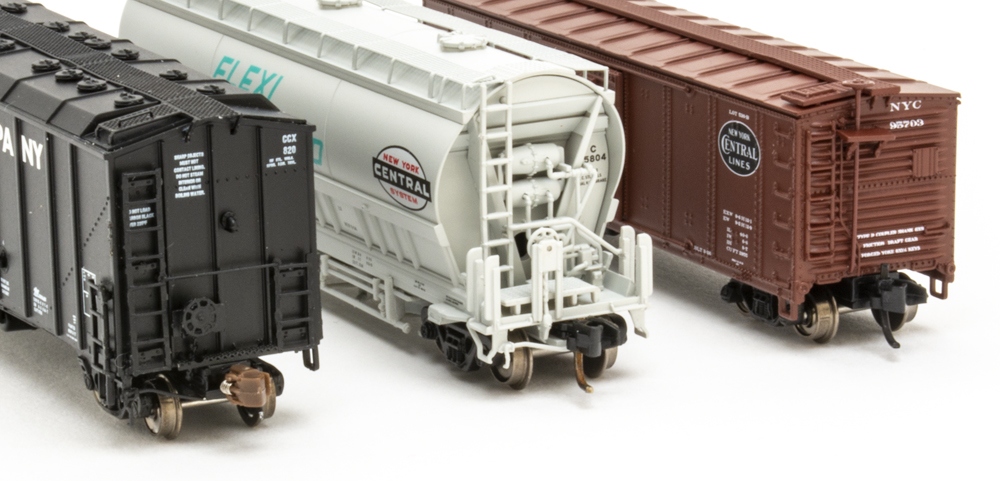
In recent years, other manufacturers have developed proprietary couplers. Examples include ScaleTrains, Rapido Trains, and Broadway Limited Imports. These couplers are marketed as Magne-Matic (or Micro-Trains) compatible.
For the most part, all brands of N scale couplers perform well while coupling. However, you may find occasional cross-compatibility issues when uncoupling. Some N scale modelers, especially those who host regular operating sessions, will pick a specific brand and use it exclusively on their models to avoid such problems.
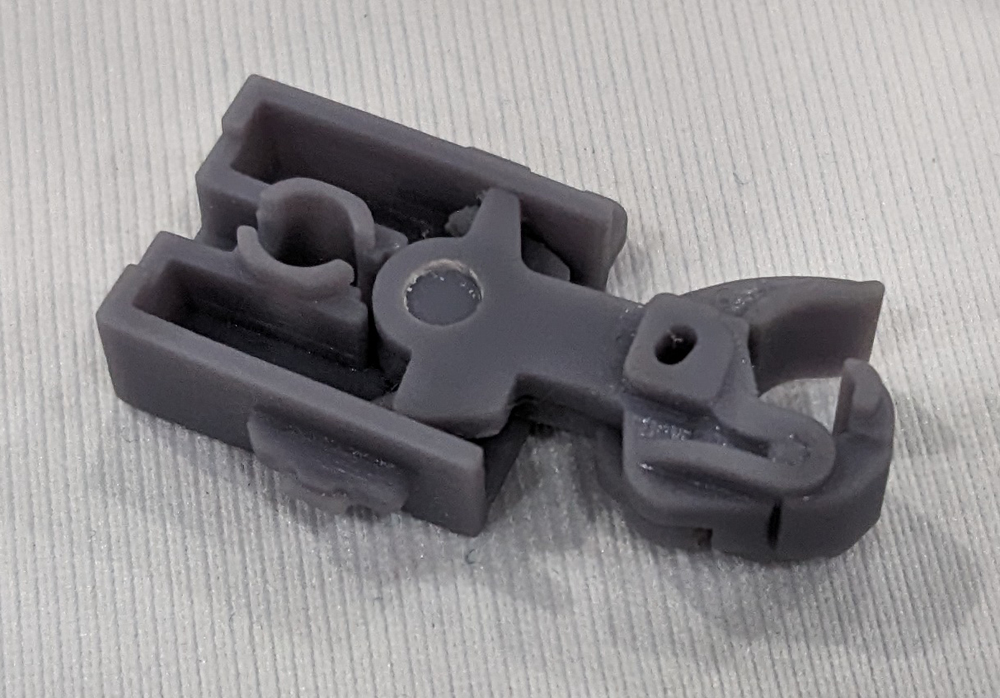
The latest news for the guide to N scale couplers came out at the 2023 National Train Show in Grapevine, Texas, where Jacksonville Terminal Co. announced its new Very Real Knuckle (VRK) coupler. Designed by Mark Runyan and the late Charlie Vlk, the VRK coupler will be available in black and rust (with and without trip pins) in short, medium, and long shanks. Additional features will include molded air hoses and multiple shims. The coupler, available exclusively from Jacksonville Terminal Co., will be offered in 20-packs (10 pair), with larger-quantity packs in the works. The coupler is a direct replacement for many existing draft-gear boxes.
Solid and other couplers
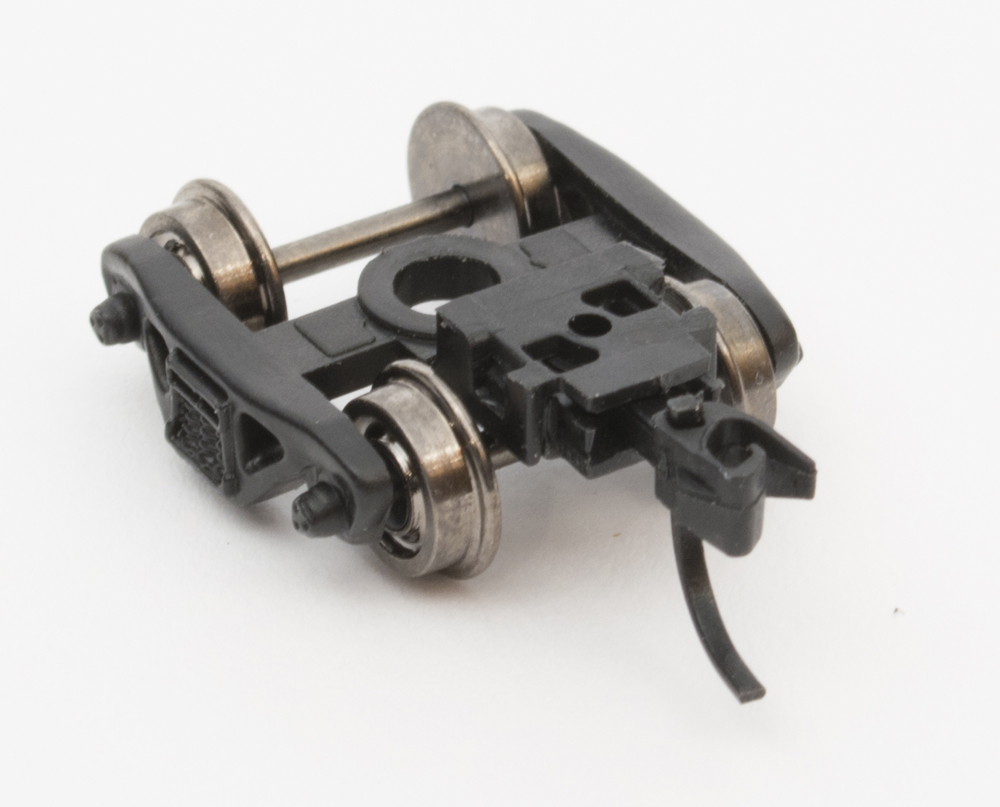
Solid-knuckle (non-opening) couplers are offered by Con-Cor and InterMountain. These are handy for passenger trains, unit trains, and multiple-unit locomotive sets that don’t require frequent uncoupling. They are pretty realistic, and also make close coupling on diesels possible. Uncoupling requires lifting an end of the car off the rails. Since solid-knuckle couplers aren’t automatic, they’re not prone to accidental uncoupling.
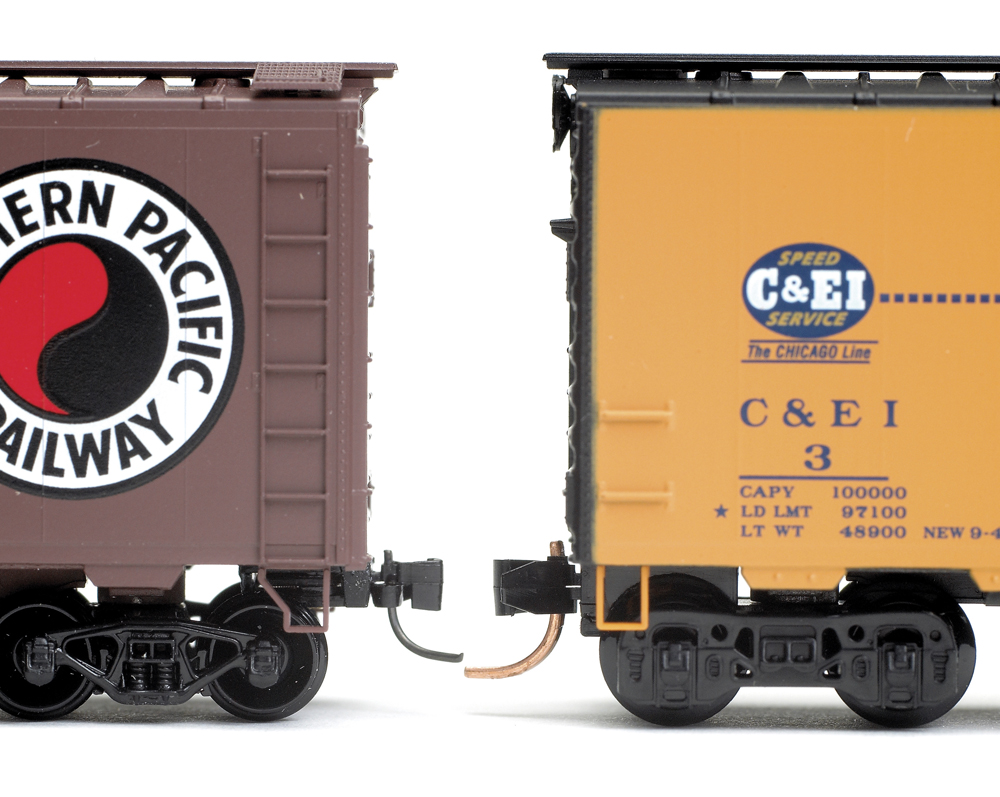
N scale lacks the scale-size and specialty couplers found in HO scale. However, some N scale modelers use Z scale couplers. Lance Mindheim, a frequent contributor to Model Railroader and owner of The Shelf Layouts Co., installed Z scale couplers on his N scale cars to give them a more scale appearance.
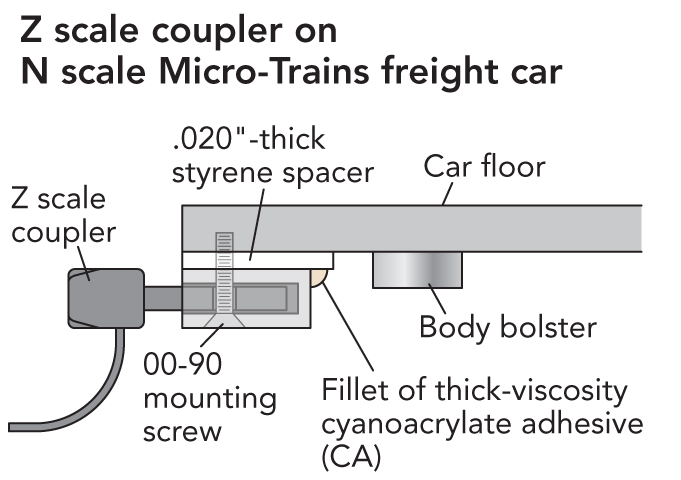
All that’s required is assembled Z scale couplers, .020″ styrene, a drill and tap set for 00-90 screws, and thick cyanoacrylate adhesive. You can learn more about this technique in the January 2007 issue of Model Railroader.
Truck- vs. body-mounted couplers
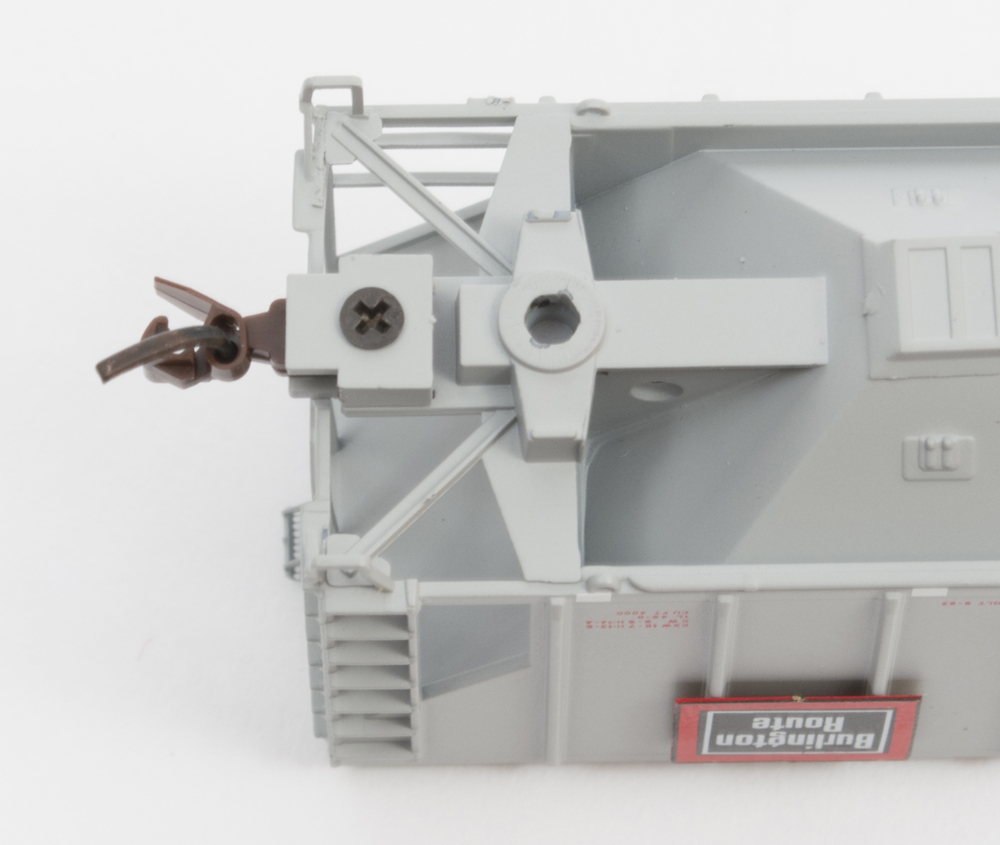
Prototype locomotives and freight cars have body-mounted couplers, but that hasn’t always been the case on N scale models. Truck-mounted couplers were the standard for many years. Today, almost all locomotives and most newly tooled freight cars have body-mounted couplers. The primary reasons for making the switch from truck-mounted couplers to body-mounted couplers are a more prototypical appearance and better operation. Former Model Railroader managing editor and longtime N scale modeler Jim Kelly has long been an advocate of body-mounting N scale couplers.
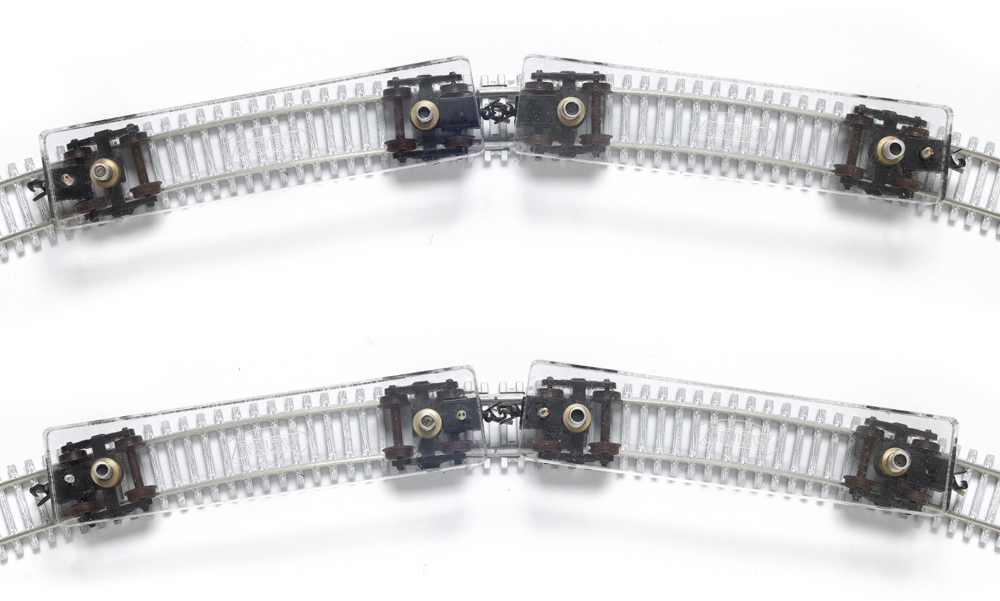
While the appearance between truck- and body-mounted couplers isn’t that obvious at casual glance, the difference between the two quickly becomes apparent during switching operations. When cars with truck-mounted couplers are shoved in reverse on curves, the force on the couplers causes the trucks to rotate outward, which can lead to derailments.
With body-mounted couplers, the force is transferred through the bodies, which pull the trucks along. This eliminates the turning force and lessens the chance for derailments.
If you want to convert your N scale cars with truck-mounted couplers to body-mounted couplers, check out this helpful step-by-step article on Trains.com.
Testing and maintenance
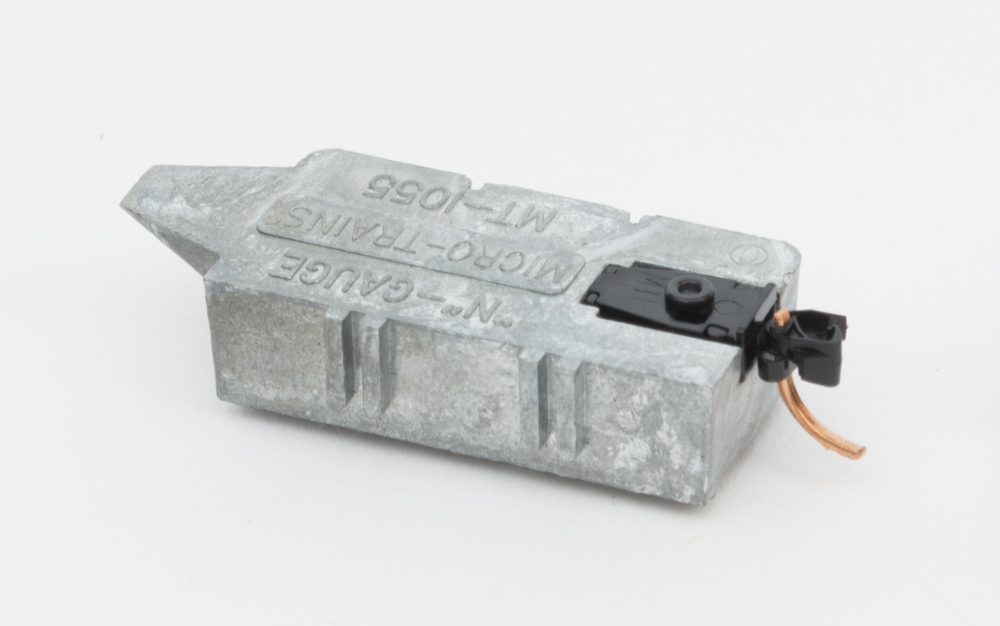
We’ll wrap up this guide to N scale couplers by discussing testing and maintenance. It’s important that couplers are mounted at the proper height. Couplers at mismatched heights are prone to uncoupling. Low-hanging trip pins are also problematic, as they can snag on turnouts and grade crossings, causing derailments and damage to equipment. Trip pins can be adjusted using special pliers offered by Micro-Trains.
However, bending the trip pin too high can impact how it actuates. The trip pin should be .010” above the railhead in N.
Micro-Trains offers a coupler height gauge, No. 1055. Before any locomotive or freight car is used on a model railroad, couplers should be checked against the gauge. The top of the couplers on the model should be at the same height as the top of the coupler on the gauge. The trip pin should clear the metal plate supplied with the gauge. This ensures that the pin is appropriately spaced above the railhead and won’t snag on turnout rails or grade crossings.
A word of caution regarding coupler height gauges. The Micro-Trains gauge is metal. If placed on a model railroad when the power is turned on, the gauge will cause a short circuit.














Although the list of couplers has gone down about there’s some good ones out there and there’s some extremely lousy ones.
My go-to couplers would be the Bachmann ez mate, Microtrains true couplers, and the McHenry couplers from Horizon hobbies. Don’t buy hook and horns they are garbage, Atlas makes good models but accumate couples from Accurail are junk and those ones will come apart real quickly, stay away from Scale Trains, Rapido, Broadway Limited Imports, and Concor their couplers are not compatible with anyone and you will have coupling issues. Definitely stay away from Rapido sometimes they’re couplers will bunch up make it an impossible for you to uncouple and other times the knuckle on that thing will break because of the type of plastic they use, and finally only use Jacksonville Terminal couplers as the last resort all their parts are 3D printed which means they are brittle so you need to be careful. Most of the couplers issued a good but stay away from the ones that are junk.
Nice article, however, I don’t see these “New” design couplers, out there on the interweb. Especially the Very Real Knuckle, not even on their own website. Wish you would have included links to where one might find these various couplers. I am especially interested in the solid couplers. Keeping my trains together is THE ONE MOST FRUSTRATING thing about N scale.